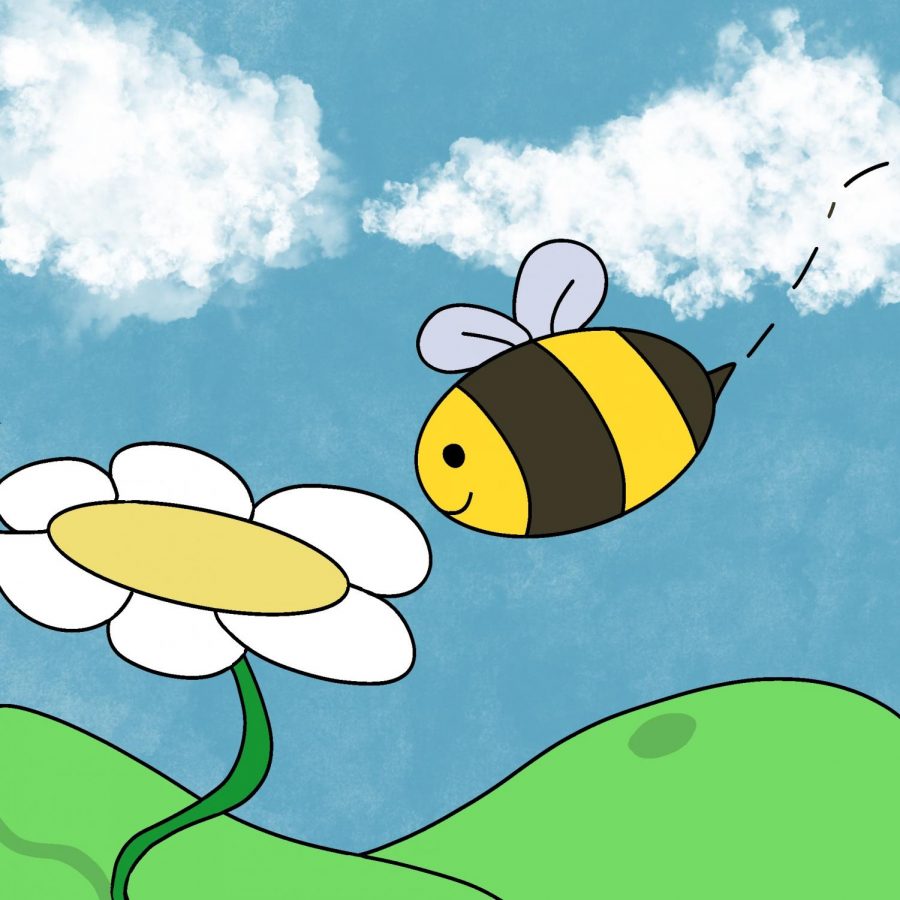Esme’s Animals: Beautiful Bumblebees
Graphic of Bee
This month is dedicated to the animal that likely pollinated those strawberry flowers for everyone’s chocolate-covered Valentine’s Day gift: the bumblebee! More specifically, however, I am going to be delving into facts about the American bumblebee, or Bombus pensylvanicus. The Center for Biological Diversity and Bombus Pollinators Association of Law Students filed a petition to the Biden Administration on February 1st to list this species as endangered under the Endangered Species Act.
These mighty insects typically pollinate in large open fields and are found on clovers and other wildflowers. The American bumblebee is one of the larger bumblebee species. Though it is generally hard to distinguish them from other species—bumblebees overall are larger, rounder, and fuzzier than honeybees. Also unlike honeybees, bumblebees can sting several times, (only females have stingers, a fun deviation from the usual patriarchal societies we see). The queens are mostly black and pollinate in the spring and create a nest where their colony can grow. Once a queen’s offspring worker daughters have grown, they leave the nest to pollinate during the summer and early fall months. The males stay behind to fertilize the queen’s eggs, or they leave to find another mate in the fall. Once fall arrives, the new queens leave to find mates for winter hibernation, and the rest of the colony dies.
Though the American bumblebee’s name suggests otherwise, it is no longer as widespread as it used to be. According to the Center for Biological Diversity, their population has declined by 89% in the past 20 years due to pesticides, habitat loss, and disease. Though they were once found all across the United States, they are only really found in parts of the South and Southwest. It is therefore vital that the US take the necessary steps to protect them under the Endangered Species Act. To sign a petition in support of the cause, click here.

Esme Chiara is a rising senior at Mayfield Senior School and the Co-Editor-In-Chief of News and Features. A member of the Mayfield Crier since her sophomore...

Angelina Matar is a Senior at Mayfield Senior School. She recently joined the graphic design illustrator team for The Mayfield Crier in the 2020-2021 school...


